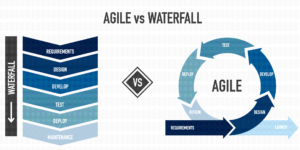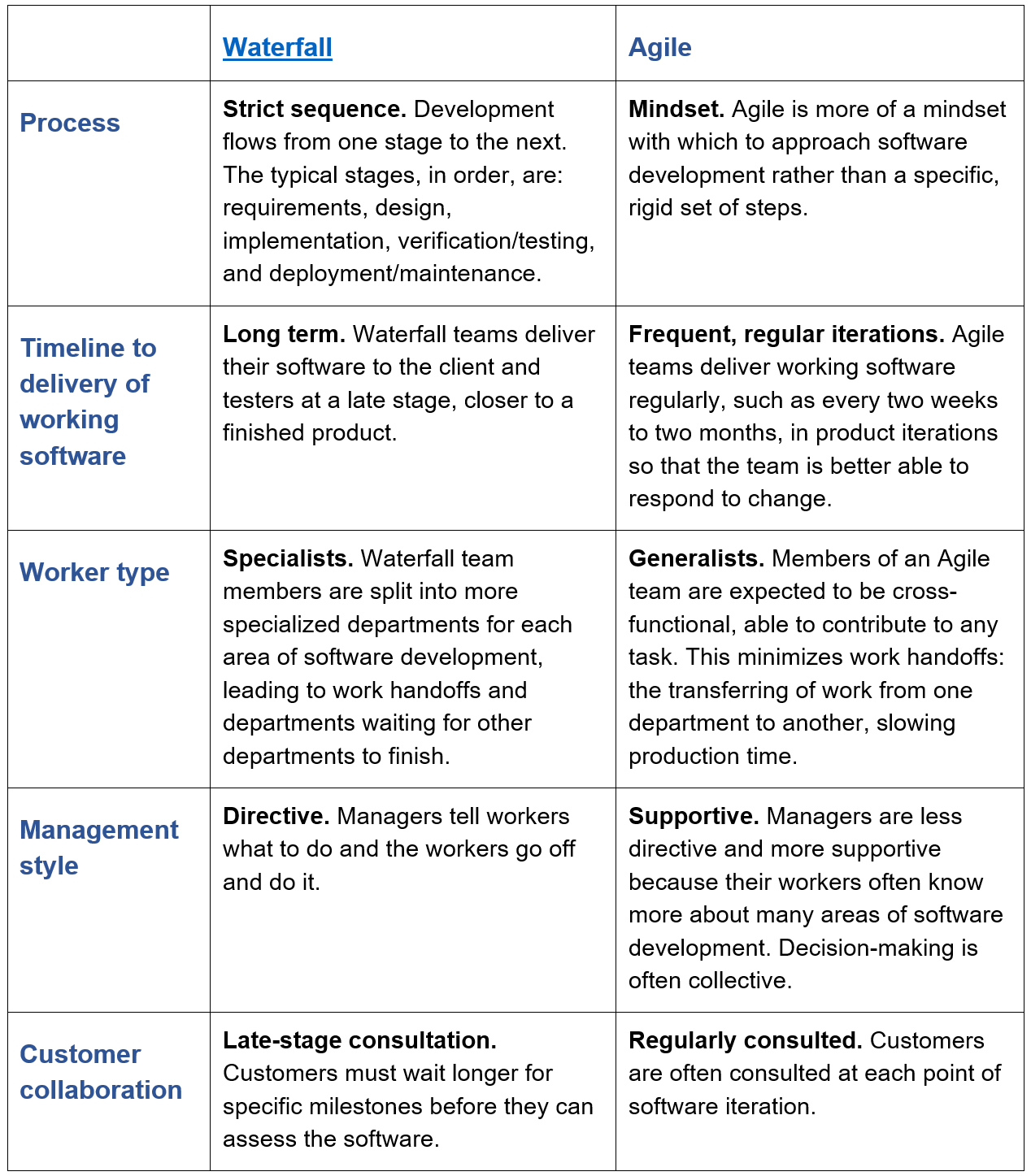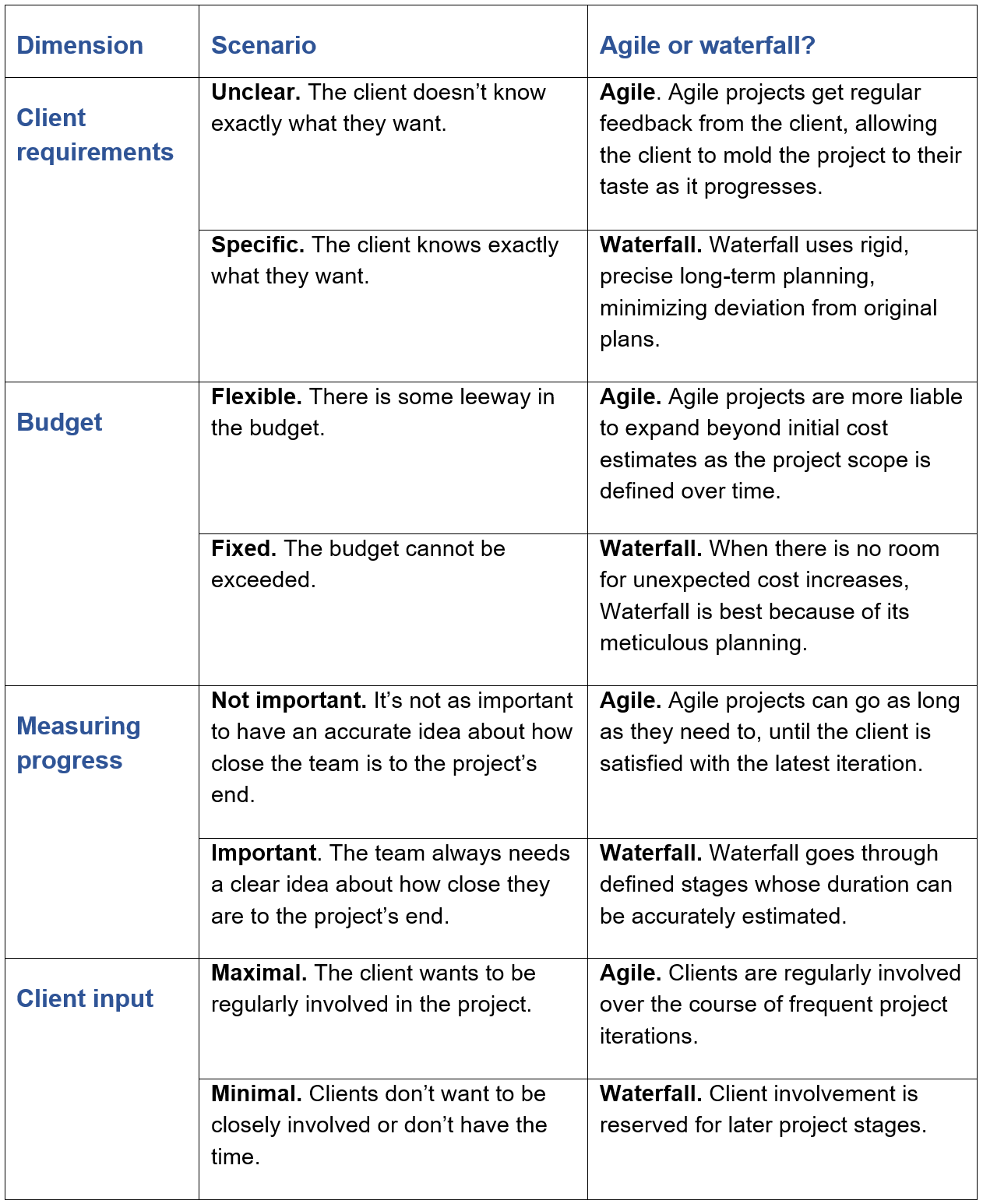Traditional project management
 Waterfall is the traditional project management style. It goes through distinct, consecutive phases, such as planning, execution, and testing. Construction and engineering projects typically use waterfall project management. One project phase cascades into the next, hence the term “waterfall.”
Waterfall is the traditional project management style. It goes through distinct, consecutive phases, such as planning, execution, and testing. Construction and engineering projects typically use waterfall project management. One project phase cascades into the next, hence the term “waterfall.”
In the 1970s, American computer scientist Winston Royce applied waterfall to software development, devising its typical stages for the industry: plan, analyze, design, code, test, and deploy.
Over time, however, software developers found that the rigid, long-term planning of waterfall could not supply the rapid ability for change increasingly needed in software development.
Agile project management
Agile is a project management method now favoured in software development. It follows The Agile Manifesto and its 12 Principles. As opposed to waterfall, Agile is more of a mindset than a strict process with specific practices.
The term was officially coined at a 2001 meeting in Utah among 17 software-industry members. They settled on the word “agile” to reflect “adaptiveness and response to change.”
There are many Agile frameworks with specific practices, such as extreme programming, feature-driven development, and most popularly, Scrum.
Why Agile matters to technical writers
Technical writers should know Agile because it is an increasingly popular management style and is already widespread in the software industry. As of 2017, 71% of businesses reported sometimes, often, or always using Agile.
Also, of all technical writing skills, project management skills affect salaries the most. Agile environments often require help authoring tools (HAT) because they speed up the documentation process in various ways. HATs include programs such as Madcap Flare, Adobe RoboHelp, and ClickHelp.
Key differences between waterfall and Agile methodologies
When to use Agile or waterfall
Sources
Waterfall methodology: https://business.adobe.com/blog/basics/waterfall
Agile methodology: https://www.linkedin.com/learning/agile-foundations/understanding-agile?autoplay=true


